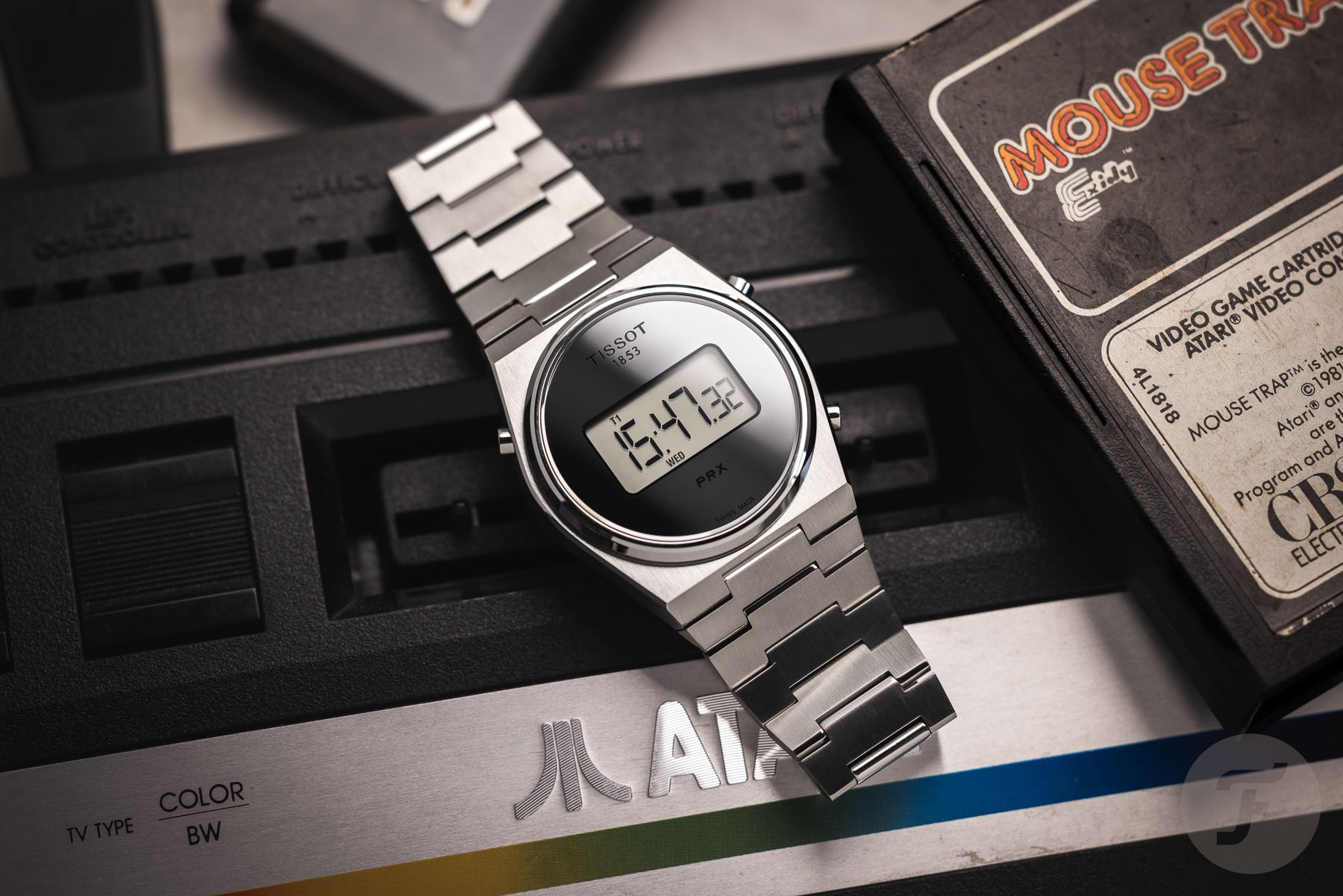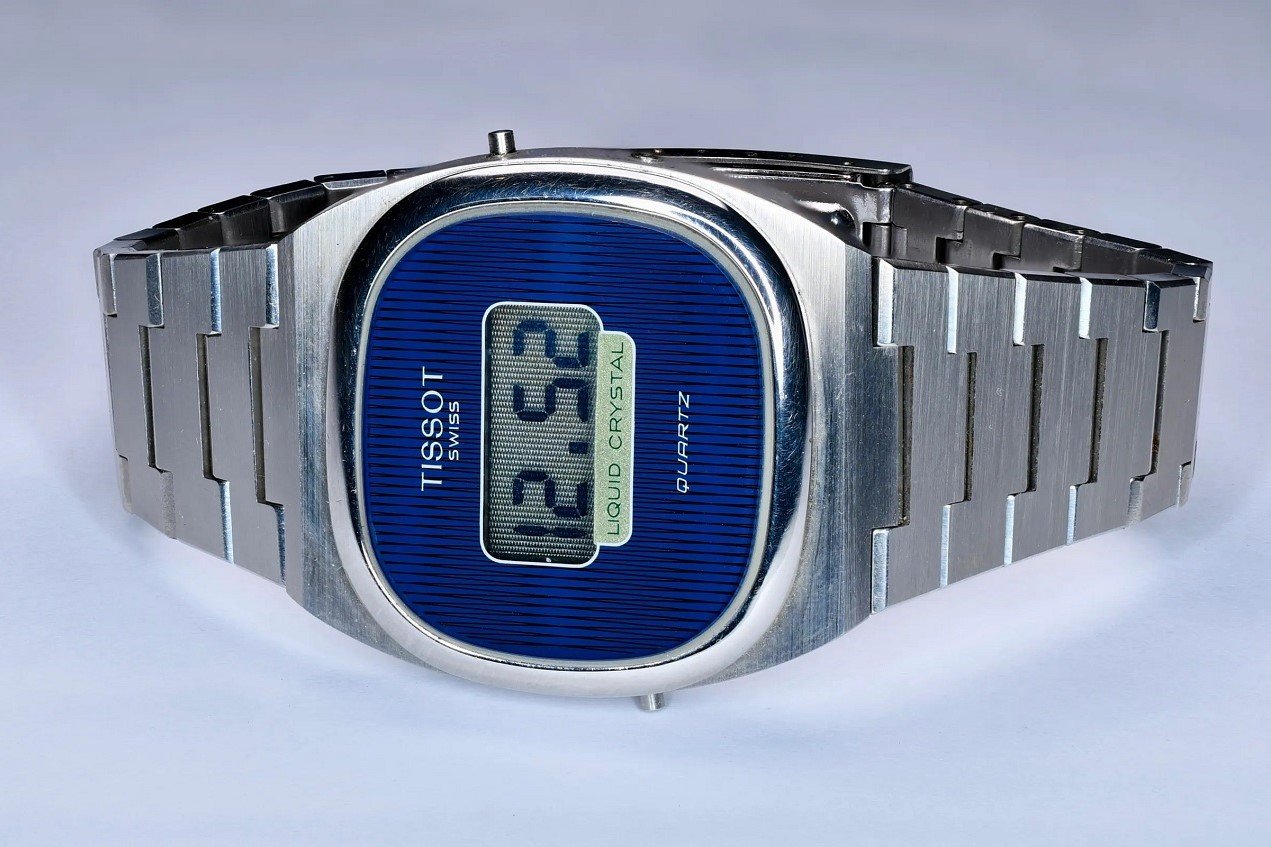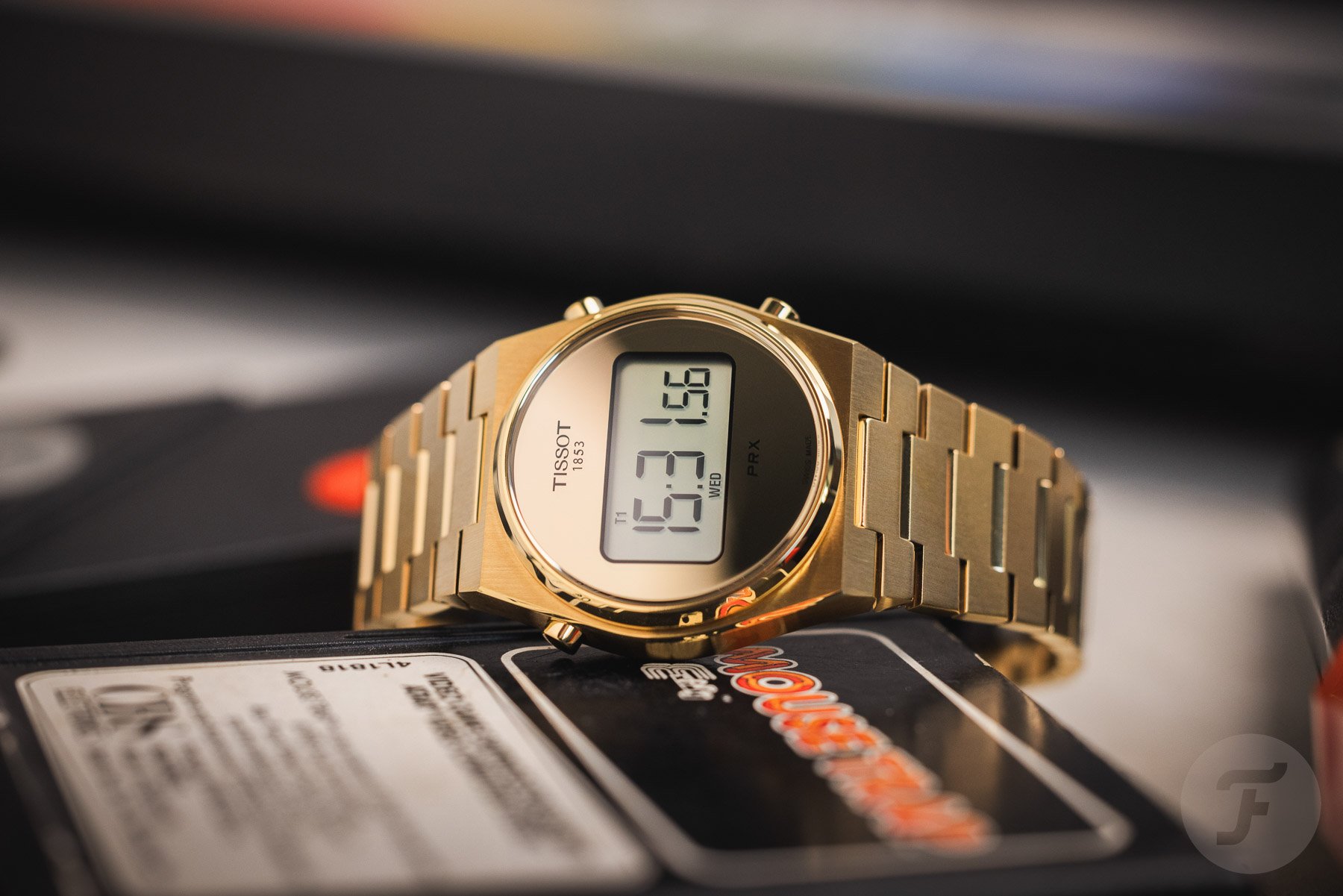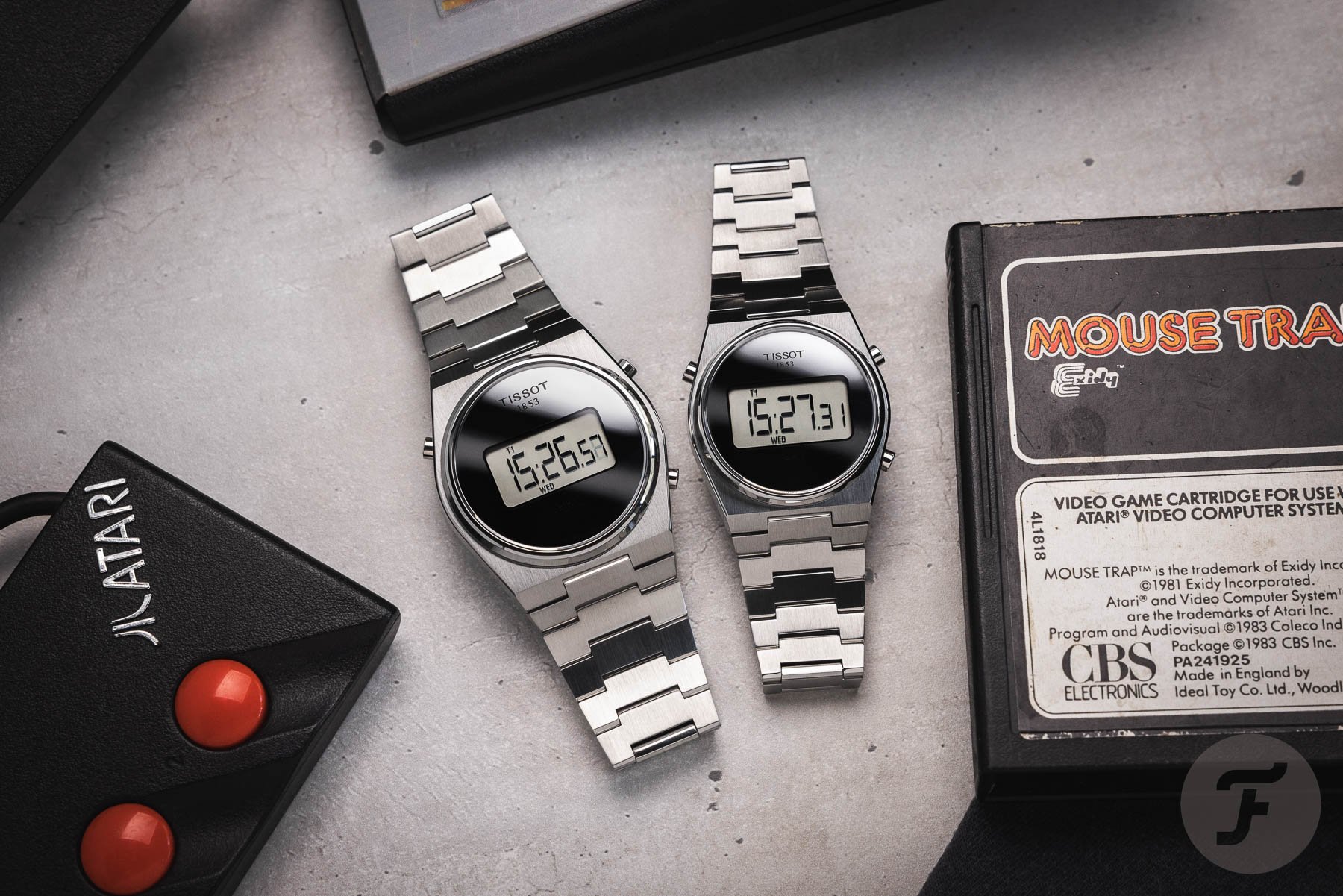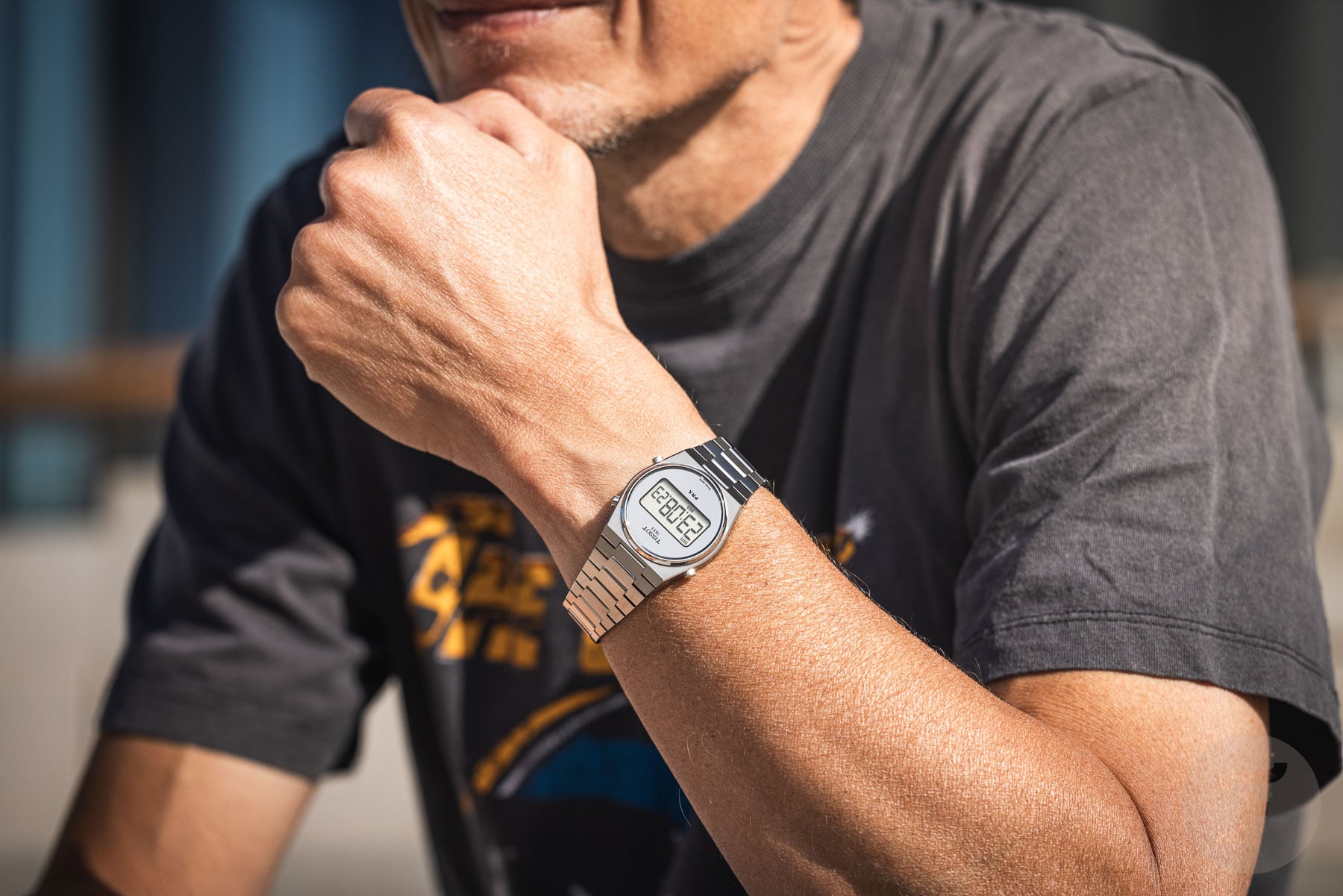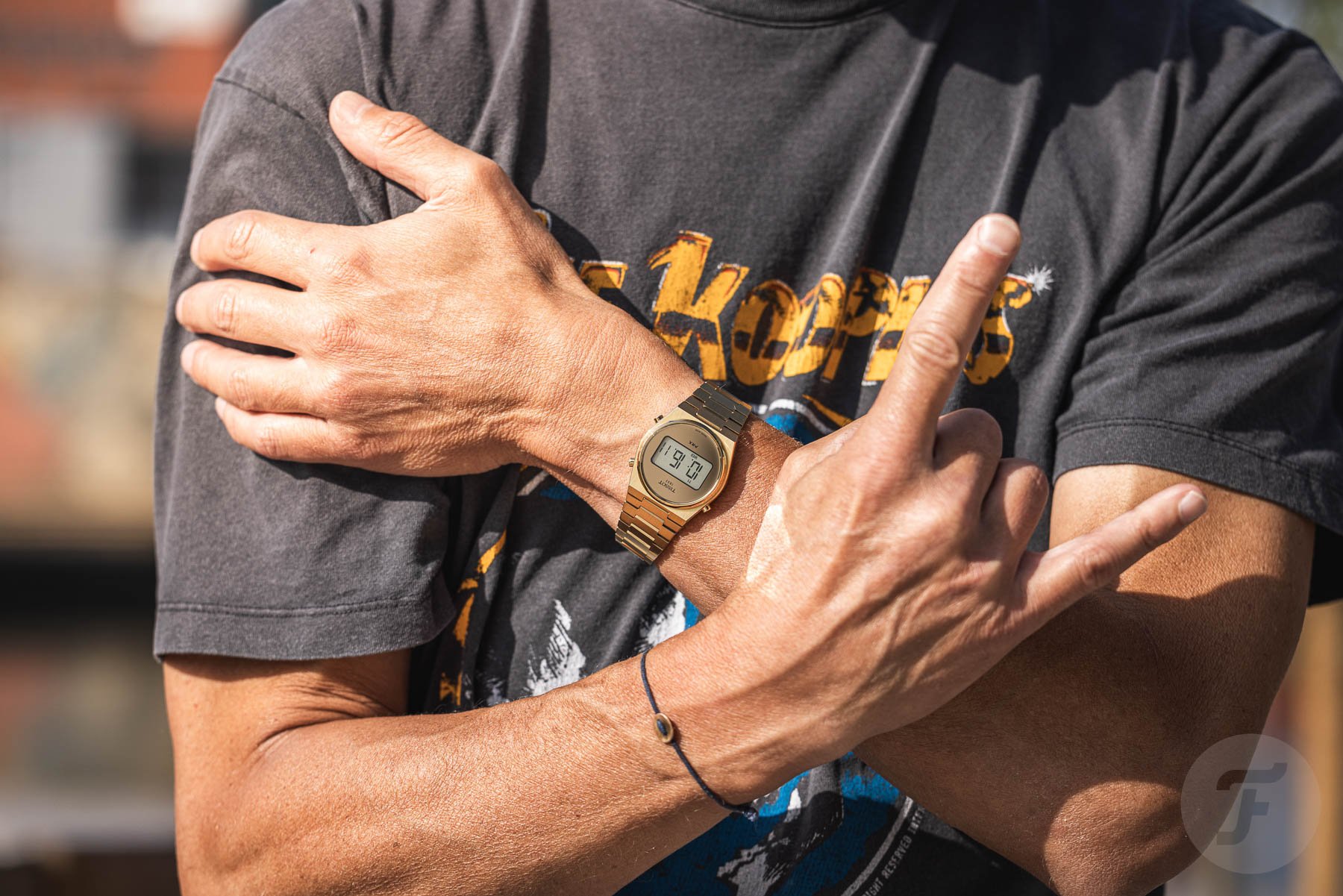Hands-On With The New Tissot PRX Digital Watches
There’s no denying that Tissot hit the jackpot with the PRX. The quartz, automatic, and chronograph versions of the watch in different sizes and colors are knocking it out of the park. Tissot is riding the PRX wave and is trying to do it for as long as possible. You can’t blame them. Especially when that effort means a string of interesting variations on the retro-modern PRX theme. Did you expect a PRX GMT with a flyer ETA movement or maybe even an affordable perpetual calendar iteration? You will have to be patient because first, it’s time for a series of Tissot PRX Digital watches.
You might think that the Tissot PRX Digital is a bit of a far-fetched concept. Well, you’re mistaken. Take a look at the 1977 Tissot Digital Quartz. With its caliber 2040 movement, this watch has quite a bit of likeness with the modern-day PRX with its integrated bracelet design. So why not take the digital history of Tissot – the brand also made the Quartz F1, TS-X series, and the Viatech digital watches in the 80s and 90s – and revive it within the popular PRX collection? Let’s take a look to see if the result makes sense.
Trying on the different Tissot PRX Digital watches
How do you look at a PRX that doesn’t have hands when you own one with hands yourself? With a bit of bewilderment, to be honest. Imagine walking to the parking lot after a hard day’s work and seeing your car without wheels or something like that. But you know what? It’s a bit like the DeLorean in the Back to the Future movies that, in the second movie of the trilogy, rotates its wheels and flies off. It’s still a DeLorean; it just has an added feature.
- Tissot Calibre 2040 – Picture courtesy of www.oldcrap.org
- The Back to the Future flying DeLorean – Picture courtesy of Rex Features
Well, the Tissot PRX Digital watches are just like that improved car/time machine. Because my mechanical PRX tells me the time and the date, the new PRX Digital also offers you a second time zone, day and date, chronograph, timer, and alarm functions. Oh, a backlight is also present to ensure you can use all the watch’s functions in the dark. You’ll quickly get the hang of the watch and how to operate the different functions. One thing that is a bit annoying is that the time and date are not displayed together, but that, of course, is very personal.
Polished presence
Yes, the absence of hands and the presence of a digital display is the first thing you notice when you first see the PRX Digital. But the shiny nature of the watches is also hard not to notice. The polished bezel and pushers contrast brightly with the satin-finish bracelet. The either black or silver surface/dial surrounding the digital display has a mirror-like finish matching the radiant and even outdoing the surrounding polished bezel.
The PRX Digital presents three diverse variations, including an all-gold PVD and a stainless-steel option with either a black or silver dial. All models are available in 35mm and 40mm diameter case sizes. Inside the 100-meter water-resistant case operates a Swiss-made DGT-2040 Quartz digital movement.
That DGT-2040 movement will, if you use it reasonably – don’t play with it too much, I guess that means – will last for four years without a battery change. Furthermore, the watches feature mirror-like sapphire glass, lending it a unique retro-futuristic appeal.
Comparing the PRX Digital to a you-know-what
I’m a fan of the PRX. I write this article with the light blue dialed 40mm on the wrist. But as much as I love my watch, and like the other analog versions – the chronograph in particular – the PRX Digital doesn’t strike a chord with me. Is it because in the late 70s and early 80s, I didn’t spend much time on an Atari game console? To be honest, my love for digital Casio watches—I tried not to mention the Japanese quartz giant for as long as I possibly could – also happened in retrospect. But now I’m on board. I favor the square G-Shock models that stay close to the original, but there are also some very 80s-looking, dressier Casio watches I came to appreciate.
The A1000D-7EF is one of them. That €100 watch from the Classic Collection Vintage series shows a nicely integrated, shaped case and bracelet that feels pretty solid. From a design standpoint, I think the Casio makes more sense. The octagonal shape of the case and bezel fit the rounded, rectangular digital screen. The Tissot, on the other hand, mixes three different shapes together; a tonneau case, a round bezel, and a rectangular display. The result looks a bit forced compared to the vintage Calibre 2040. And then there’s the price of the six new handless PRX watches.
Pricing of the Tissot PRX Digital
The 40mm models of the PRX Digital have a price of €375 for the steel with silver (T1374631103000) and black (T1374631105000) dial and €445 for the “gold” (T1374633302000) version. The 35mm versions have the same price. So that’s €375 for the silver (T1372631103000) and black (T1372631105000), and €445 for the one that received some sort of Midas touch (T1372633302000).
Do these watches look and feel four times better than the premium Casio I mentioned? That is a tricky question to answer. The Tissot is Swiss-made, and that comes with a price. Regarding prices, the case of the 35mm and 40mm have the same 11mm height as the mechanical ones. And that makes producing cases for the PRX collection very cost-efficient. Maybe I would have loved the PRX Digital better if it had a thickness of around 8mm. It would make it not only slimmer, but because of the height, it would also wear differently. It’s a little less sporty and prominent and a bit more slick and suave. A bit more 1970s, I guess.
Don’t get me wrong, the PRX Digital feels robust and well-finished. But the watch tries to emulate the same neon-vintage, late 70s, early 80s vibe as the Casio, and in the end, it doesn’t seem to do it four times better. But hey, maybe I’m wrong, and perhaps you can actually feel the vibe of the different Tissot PRX Digital watches? Let me know in the comments.

